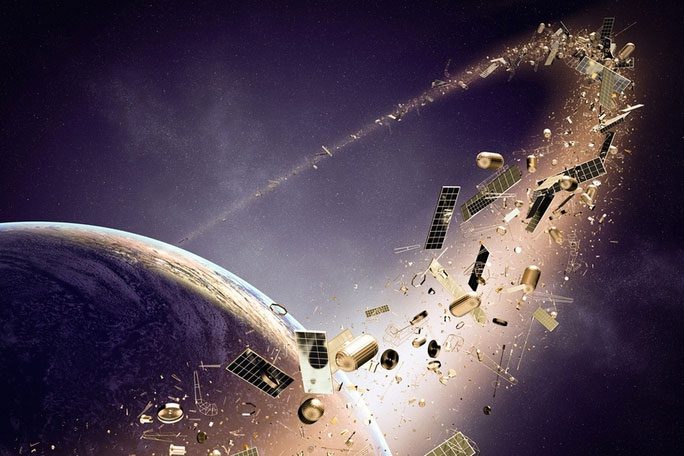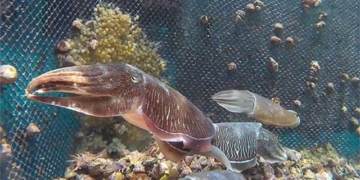Data from a satellite monitoring and collision detection company reveals that the space surrounding Earth was nearly bombarded by thousands of debris pieces when a rocket body and an old spy satellite passed each other.
According to Space, thousands of pieces of debris that are extremely dangerous to spacecraft and other operational space equipment almost scattered throughout low Earth orbit, if the two large space junk pieces, a rocket body and a “dead” satellite, had not narrowly missed each other in a “hair’s breadth.”
Specifically, the satellite monitoring and collision detection company LeoLabs reported that the two pieces of space debris slipped past each other with an extremely small margin of just 6 meters.
They are a rocket body and a spy satellite – Komos-3 and Cosmos 2361 from the former Soviet Union – which has long been inactive.

Space above Earth’s atmosphere has been turned into a massive junkyard by humanity, posing many risks – (Photo: MIT NEWS).
Komos-3 is a type of rocket used by the Soviet Union and Russia from 1964 to 2009; however, the piece that nearly collided is believed to be very old. Meanwhile, Cosmos 2361 is a spy satellite designed to intercept electronic signals such as radio communications and jam radar.
The incident occurred in an area that LeoLabs refers to as the “bad neighborhood” within the region of space known as LEO, which extends from an altitude of 950 to 1,050 km above the Earth, filled with many inactive, unowned, and abandoned objects in orbit for years.
This creates a massive cloud of debris in space that is extremely dangerous because if two pieces of space debris collide, they will scatter countless fragments, potentially causing a disaster. Russia’s Soyuz spacecraft that experienced a leak late last year is also suspected to have been hit by a meteorite or a small piece of debris, according to conclusions from Roscosmos and NASA (the space agencies of Russia and the United States).
LeoLabs reported that there were 1,400 “near misses” in this area alone during the period from June to September 2022.
These incidents highlight the urgent need for new strategies to remove space debris from LEO as well as other areas above Earth’s atmosphere. According to NASA, there are currently nearly 30,000 other pieces of debris in orbit that the U.S. Department of Defense is tracking, but many more pieces are lurking, too small to detect yet still capable of causing harm.


















































